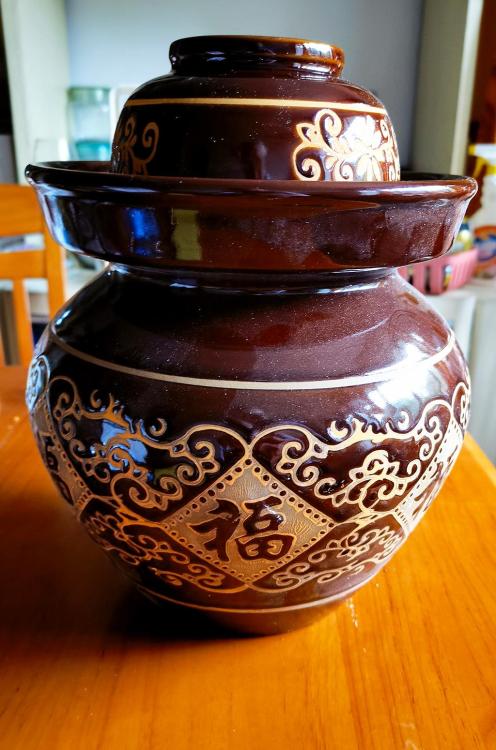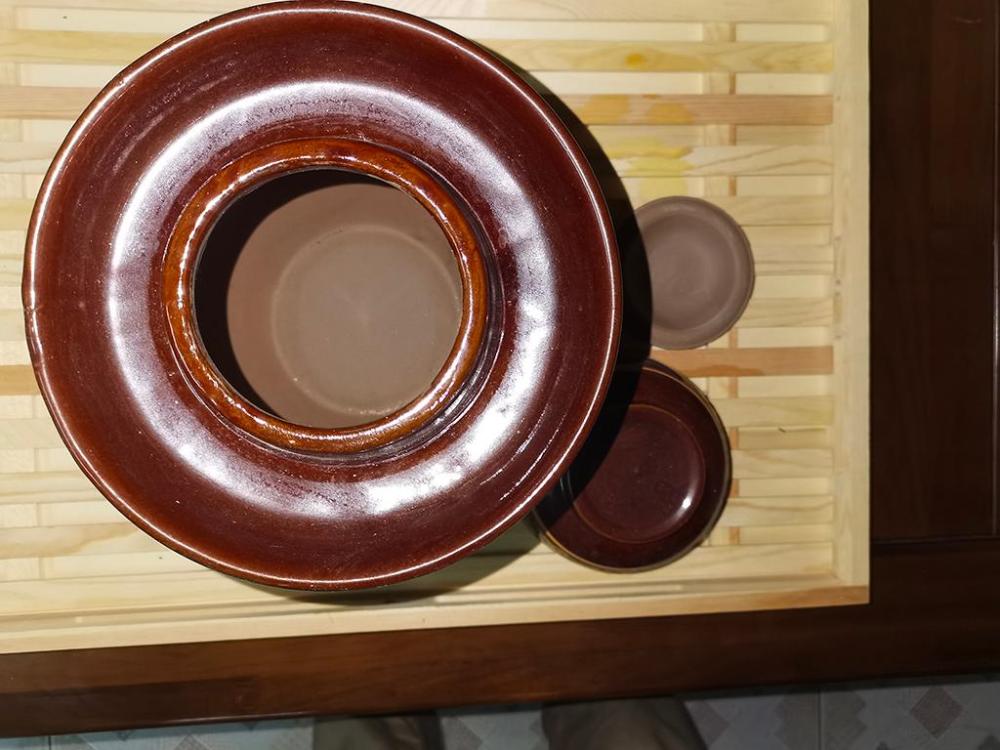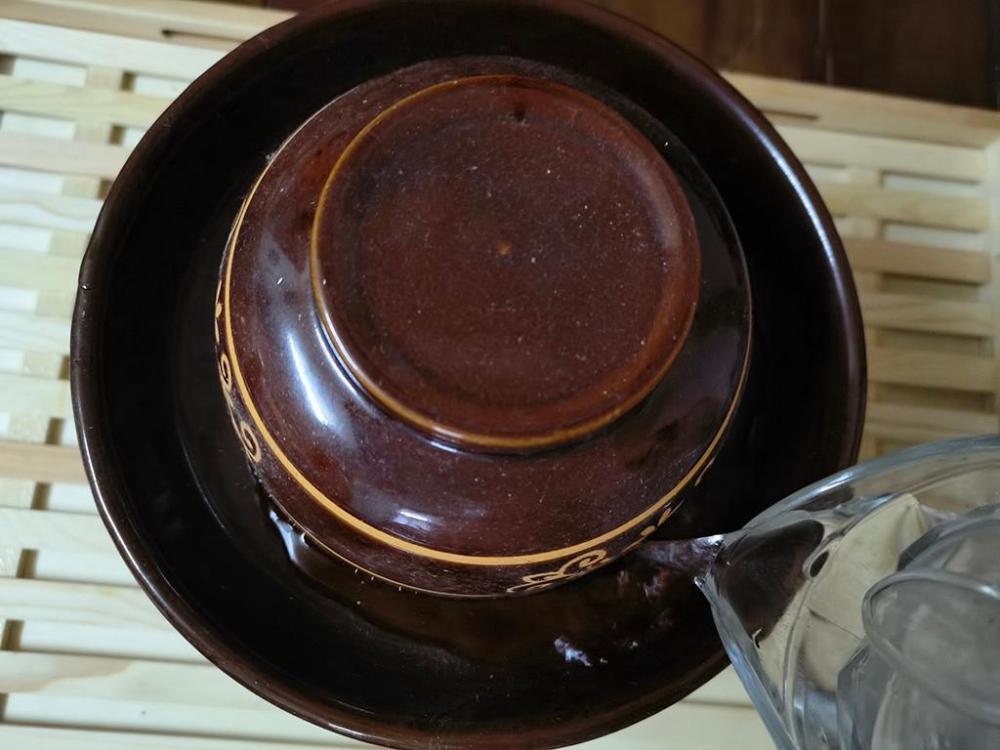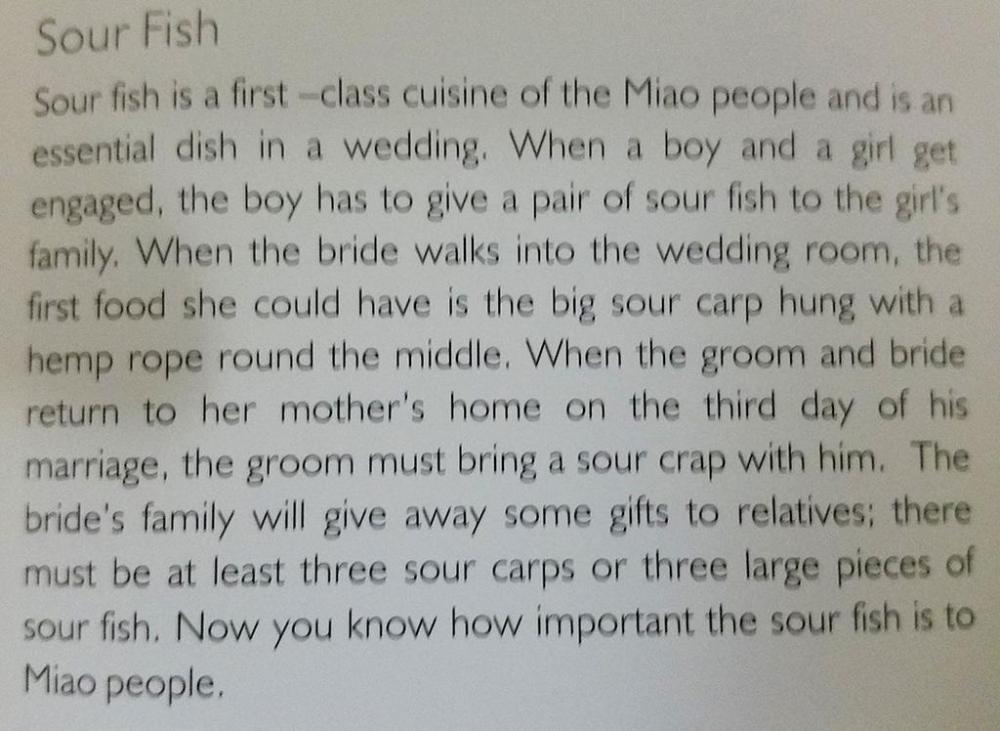8. 酸肉和酸鱼 (suān ròu hé suān yú)
Miao Maidens
One of the more unusual gastronomic delights among the ethnic minorities is 酸肉和酸鱼 (suān ròu hé suān yú) - the pickled pork and pickled fish which are essential foods for the Miao and Dong peoples. These are sacrificed in their ancestor worship festivities and also served to entertain guests. Pickled fish and pickled duck are indispensable to wedding receptions, funerals, to welcome new babies etc. A large pickled goose is considered a great gift. More than half of the dishes in a Dong meal will be pickled. You could almost say, for the Dong, if it isn’t pickled; it isn’t food.
The following is compiled from various descriptions by Miao and Dong friends so please take it as it comes. I have edited it slightly, but been careful to change nothing significant. For what follows, it is essential, I think, to show you and explain the pickle jars to which it refers. Luckily, I have two to hand! My other is plain glass, so harder to photograph.
This jar can contain 5kg of water (1⅓ US gallons), but they come both smaller and much larger. Like most of these jars, it is in three parts: the main container; an internal lid and an external lid. The neck of the jar has a reservoir into which the external lid fits. The reservoir is then filled with water forming an airtight seal. Simple but effective.
Internal View and Reservoir Space
With Internal Lid
With External Lid and Water to Seal
The story:
The pickled pork comes in bright colours: the skin is yellow, the fat is milky white, and the lean meat is dark red. Each piece of meat has a few grains of rice or pepper attached, and has a fragrant taste. The skin is crisp, the meat is fresh, the pickling is moderate, and the aroma is pervasive, but pleasant. It tastes refreshing and has no greasy feeling. When eating, the diners sprinkle the pickled meat with dry spice powder.
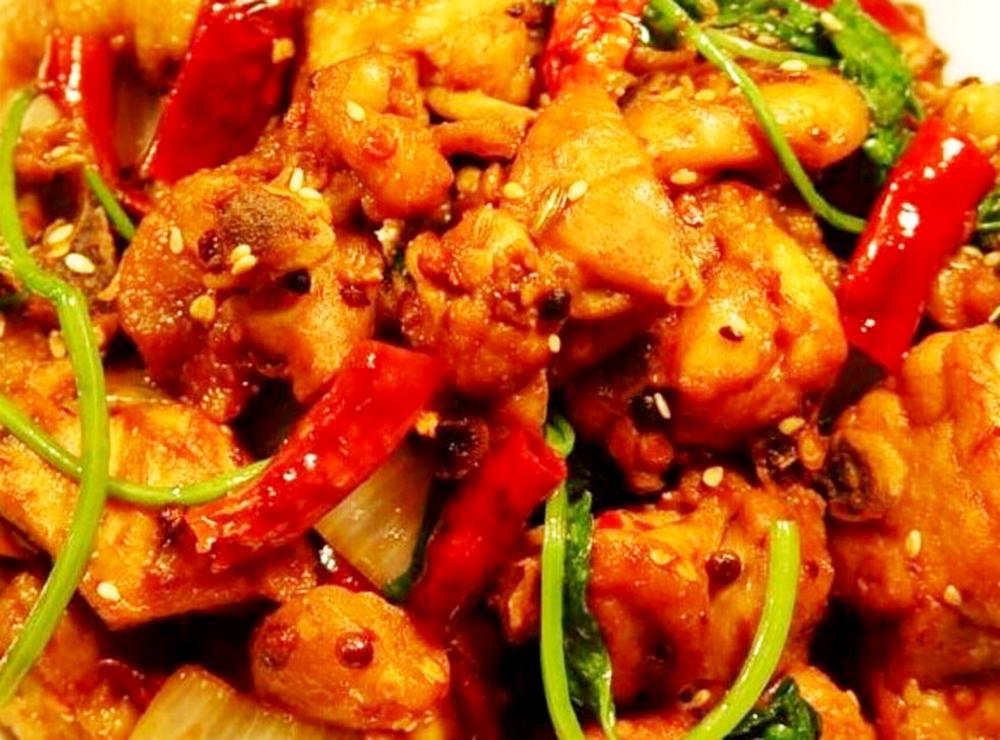
Pickled Pork
Cooking Methods
1. Put the raw meat with skin on a charcoal fire. It's better to use pork head meat and remove the bones. Burn the skin and scrape away the blackened results with a knife. The purpose is to remove hair and dirt. Do not scrape with water. After scraping and the skin is golden yellow, then cut into thin slices and placed in a pot. Pour prepared salt, pepper, saltpetre, and dried glutinous rice into the pots of the meat and mix evenly. The usual mix is 40g salt, 25g peppercorns, 10g saltpetre and 100g glutinous rice for 500g fresh pork.
2. Put the washed pickle jar upside down with the mouth of the jar down, and use the smoke from the embers to smudge the jar for 2 to 3 minutes, so that the smoke flavour in the jar is lingering, and then the jar is placed in a positive position. Squeeze the pork meat with the hand and then put a piece of burning red charcoal into the jar on the pressed pork noodles. At the same time, add the jar cover and seal it with water. Place it in a cool and dry place and pay attention to always keeping the jar sealing water sufficient. When the pickling is mature (usually 10 days in summer and two weeks in winter), you can open the jar and eat the meat.
3. Notes
A. When the jar is installed, it is not advisable to overfill with meat. It is necessary to leave a certain space. Generally, the meat surface should be 2 to 3 inches from the mouth of the jar;
B. During the period of pickling, the lid should not be opened, otherwise air will enter and the meat will be mildewed;
C. After removing any food, you should cover the jar quickly and keep the water in the tray so that it is always in a sealed state. Generally, the maximum storage time of pork in the jar after opening the lid is about 3 months.
I've posted this before, but it is both informative and amusing (unfortunate typo). Note: 酸 (suān) means both 'sour' and 'pickled'. I prefer 'pickled' for foodstuffs, but I often see it translated as 'sour', as here.

Pickled Fish
For more on Miao and Dong people and their food see these two topics:
and



